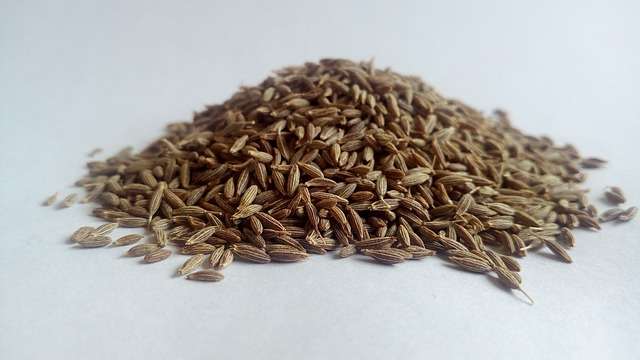Nutrition Essentials: Your Pregnancy Diet Plan for First-Trimester
Maternal health and nutrition are crucial during pregnancy, as it is a life-changing experience with multiple milestones. It is critical to comprehend the subtleties of a pregnancy diet plan for first-trimester as expectant mothers set out on this incredible adventure. Nutrient intake must be prioritized throughout the first trimester since it lays the groundwork for both fetal development and the mother’s health. We explore the key elements of a first-trimester pregnancy diet plan in this extensive guide, stressing the significance of feeding mother and child. With everything from talking about essential nutrients to offering doable methods for creating a balanced diet, our goal is to arm pregnant moms with the information they need to face this exciting time with strength and vitality. Pregnancy Diet Plan for First-Trimester Nutritional Needs: The first trimester of pregnancy is a critical period characterized by rapid changes in both maternal physiology and fetal development. During this time, the body undergoes significant adjustments to support the growing embryo, laying the groundwork for a healthy pregnancy. Understanding the specific nutritional needs during the first trimester is essential for ensuring optimal maternal and fetal health. Essential Nutrients for Early Fetal Development: The early phases of pregnancy are marked by the formation of vital organs and tissues in the developing embryo. Nutrients such as folate, iron, and protein play important roles in supporting these processes. Folate, for instance, is crucial for neural tube development, reducing the risk of neural tube defects like spina bifida. Iron is vital for oxygen transport to the fetus and maternal tissues, while protein is necessary for cell growth and repair. Increased Energy Requirements: Pregnancy imposes additional energy demands on the body to support the growth and development of the fetus, as well as maternal tissues. While calorie needs vary depending on factors such as pre-pregnancy weight and activity level, expectant mothers typically require additional calories during the first trimester. However, it’s important to emphasize nutrient-dense foods rather than simply increasing caloric intake to ensure adequate nutrition. Hydration and Fluid Balance: Adequate hydration is essential for supporting maternal circulation, nutrient transport, and fetal development. During the first trimester, hormonal changes may increase the risk of dehydration and fluid retention, making it crucial for expectant mothers to prioritize hydration. Water-rich foods such as fruits and vegetables can contribute to overall fluid intake while avoiding excessive caffeine and sugary beverages is advisable. By understanding and addressing these nutritional needs during the first trimester, expectant mothers can lay the foundation for a healthy pregnancy and promote optimal outcomes for both themselves and their babies. Crafting a well-rounded pregnancy diet plan for first-trimester that prioritizes essential nutrients and hydration is key to supporting maternal and fetal well-being during this critical period. Key Nutrients for a Healthy Pregnancy Diet: Throughout pregnancy, it is critical for the health and development of the expectant mother and her unborn child to maintain a diet that is nutrient-rich and well-balanced. In order to support early fetal growth and the mother’s well-being, some critical nutrients are especially important during the first trimester. Folate: Also known as folic acid when taken in supplement form, folate is perhaps one of the most important nutrients during pregnancy, especially in the early stages. Adequate folate intake helps prevent neural tube defects such as spina bifida and anencephaly. Green leafy vegetables, citrus fruits, fortified cereals, and legumes are excellent sources of folate. Iron: Iron is essential for producing hemoglobin, the protein in red blood cells that carries oxygen to tissues throughout the body, including the placenta and the growing fetus. During pregnancy, maternal blood volume increases, necessitating higher iron intake to support both maternal and fetal needs. Good sources of iron include lean meats, poultry, fish, fortified cereals, and leafy green vegetables. Calcium: Calcium is crucial for building strong bones and teeth in both the mother and the developing baby. Pregnant women should aim to consume adequate calcium to support the increased needs of pregnancy. Dairy products, fortified plant-based milk alternatives, tofu, and leafy greens are excellent sources of calcium. Omega-3 Fatty Acids: Omega-3 fatty acids, particularly DHA (docosahexaenoic acid), are essential for fetal brain and eye development. They may also help reduce the risk of preterm birth and support maternal cardiovascular health. Fatty fish like salmon and sardines are rich sources of omega-3s, while vegetarian options include flaxseeds, chia seeds, and walnuts. Protein: Protein is the building block of cells and tissues, making it essential for the growth and development of the fetus. Pregnant women should aim to include protein-rich foods in their pregnancy diet plan for the first trimester, such as lean meats, poultry, fish, eggs, dairy products, legumes, nuts, and seeds. Designing Your Pregnancy Diet Plan: Crafting a personalized pregnancy diet plan for first trimester is essential for meeting the unique nutritional needs of both the expectant mother and her developing baby. Here’s how to design a comprehensive and nourishing diet plan: Assess Your Current Diet: Begin by evaluating your current eating habits and identifying areas for improvement. Consider factors such as nutrient intake, food preferences, and any dietary restrictions or preferences. Consult with a Healthcare Provider: Schedule a consultation with your healthcare provider or a registered dietitian to discuss your nutritional needs and develop a customized pregnancy diet plan for the first trimester. They can guide personalized guides based on your history, dietary choices, and lifestyle factors. Focus on Nutrient-Dense Foods: Prioritize nutrient-dense foods that provide essential vitamins, minerals, and other nutrients necessary for a healthy pregnancy. Include different fruits, vegetables, whole grains, proteins, and good fats in your diet. Balance Your Macronutrients: Aim to include a balance of carbohydrates, proteins, and fats in each meal to support overall health and energy levels. Opt for complex carbohydrates, lean proteins, and unsaturated fats for sustained energy and satiety. Stay Hydrated: Drink plenty of water throughout the day to stay hydrated and support optimal maternal and fetal health. Aim for at least eight glasses of water per day, and consider consuming hydrating foods such as fruits and … Read more








